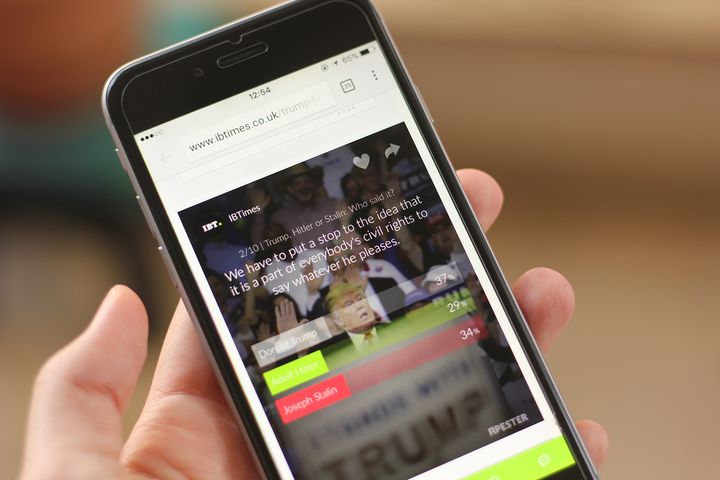
What do you think when someone mentions AOL?
For many of us, AOL is something of an anachronism – a throwback to the early years of the internet. I remember it as being the web portal and email client of choice for the older generation. At the time, most people my age saw our parent’s over-reliance on its slow and overly protective browser as an unnecessary crutch. Nevertheless, it remained very popular for a long time and, for a while, AOL’s chirpy ‘you’ve got mail’ was synonymous with email if not the web as a whole. It even spawned a film with the same name!
Then it just kind of faded into nothingness, as a relic of the past.
As it turns out though, AOL is alive and kicking and starting to win over the very Millennials who once scorned it. The brand has a new, forward-thinking attitude that is surprisingly in-tune with what makes successful online content. In fact, it can even be seen as something of a pioneer in digital storytelling.
But how did this happen? And what does it all mean?
AOL: A Brief Recent History
In 2009, after a period of serious decline, AOL made a shift to become a digital media company, complete with a rebranding and new attitude. In 2011, AOL (or ‘Aol’ as it was now known) bought a little site known as Huffington Post (you may have heard of it) followed by the purchase of ‘Hipster’ – the mobile sharing app, a year later. Other acquisitions included TechCrunch and Engadget.
In 2015, AOL was purchased by Verizon. Last year Verizon acquired a virtual reality studio called RYOT which had been nominated for two Emmy Awards for its videos. Their new platform Go90 is an ad supported video platform aimed at teens and young adults. The majority of the company’s revenue now comes from advertising, which places content at front and center in the brand’s strategy.
Digital Storytelling is ‘SEO for the Human Brain’
These changes considered together provide some major clues as to the new direction AOL is taking. Part of what has helped with this successful transition is AOL’s new reliance on digital storytelling. It might be an internet marketing buzzword, but digital storytelling highlights an important philosophy behind successful content.
Storytelling has been described as SEO for the human brain. That is to say humans aren’t really all that excited about key phrases. What we like is to read a story that has a beginning, a middle and an end. We like to get emotionally invested in a tale because our brains are literally hardwired to absorb this kind of content. After all, we’ve been sharing stories for thousands of years!
Even Google is catching on. RankBrain is an algorithm for Google that attempts to view content in a manner more similar to the way a human would. The idea is to retrieve content that humans will find engaging – rather than just looking for specific signals to tick off on a checklist. So even from a search engine optimization perspective, telling stories makes more sense than conveying dry information.
And we don’t just like reading stories. We like to share them, to talk about them and to gossip about them. Stories evolve over time with each retelling, thus making the reader and the writer active participants in a dialogue. RYOT’s mission statement neatly summarizes this intent: “Catalyzing the future of media by inviting our audience to be more than a witness.”
How AOL is Adapting Digital Storytelling and Interactive Media
Stories are most likely to engage the active millennial users cruising the web and keep them glued to the page. Unless we are specifically looking for information to help with work or a particular task, we want our news and our entertainment delivered in a more personal, social and engaging manner. Hence the rise of clickbait. Hence the rise of Buzzfeed. Hence the rise of darker trends, like ‘Fake News.'
This story-led focus has clearly had a big impact on AOL’s direction, without sacrificing what once made the company such a patriarch of the web. A look at the homepage reveals attention-grabbing headings that deliver genuine news in a manner that both engage and trigger an emotional response.
Likewise, the company is smart to regularly include more interactive and social elements. It has highlighted features from the likes of Apester for example, a content creation platform very much on the pulse, and one which takes full advantage of the medium with quizzes, polls and other dynamic elements which enhance news reporting. Apester represents the kind of content that AOL is now encouraging – content that lets users have a say, get involved, and interact. Once again though, there is still that guiding hand to ensure the content remains reliable and accurate.

This is how AOL is appealing to Millennials and it’s how the brand has managed to pull off that rare feat of making a genuine comeback.
Closing Comments: We Need More Sites Like AOL
The web is now less passive than ever before. It is shaped by its very readers. This can be a good thing or a bad thing. It’s reassuring that sites like AOL encourage more story-driven, interactive content while still offering the kind of oversight, curation and commitment to facts that's missing from some other networks.
The old guard has returned. AOL is now more in-tune with the younger generation, but it brings a certain authority that comes with experience. Welcome back AOL!
